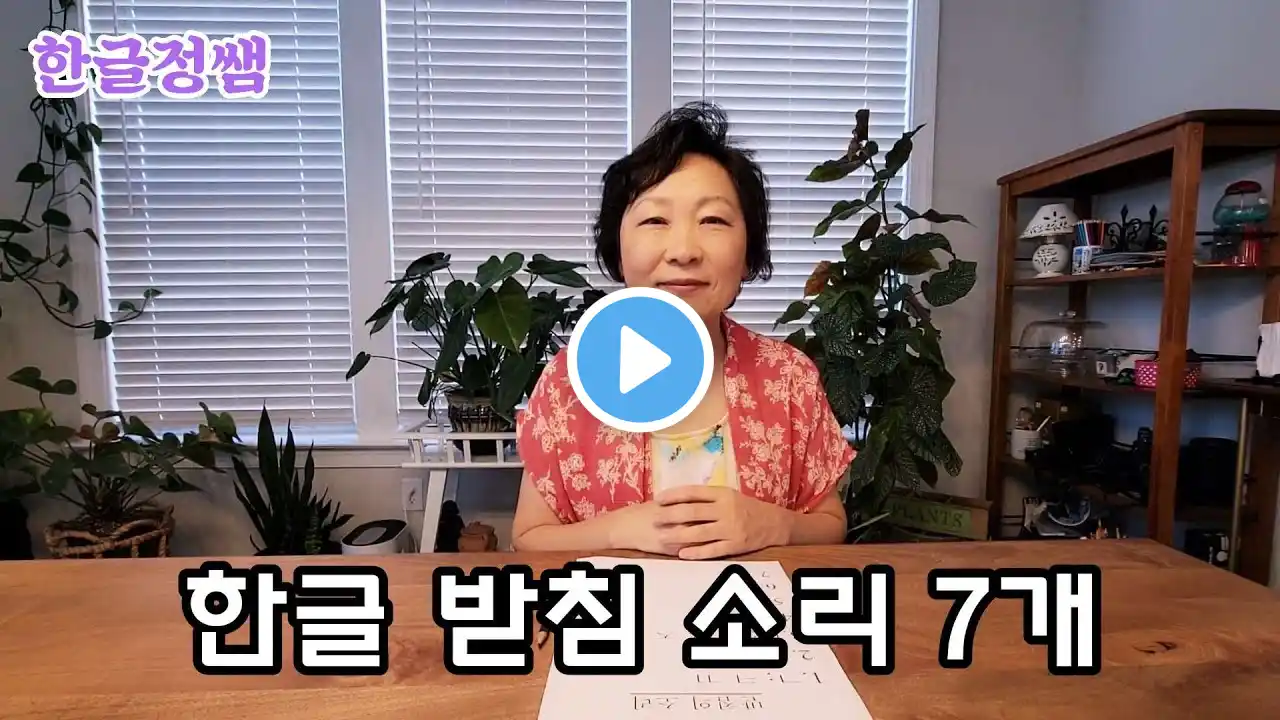
한국어의 문자, 한글의 받침 7소리 7 Sounds of Korean Final Consonants (Batchim)
한국어의 문자, 한글의 받침 7소리 7 Sounds of Korean Final Consonants (Batchim) 한글의 기본 자음은 모두 받침으로 사용할 수 있습니다 Each of 14 basic consonants of Korean can be used as final consonants, Batchim 쌍자음 중 ‘ㄲ’와 ‘ㅆ’ 또한 받침으로 사용할 수 있습니다 Among 5 double consonants of Korean, ‘ㄲ’ and ‘ㅆ’ also can be used as Batchim 총 16자의 자음이 받침으로 사용될 수 있지만, 소리는 7개에 불과합니다 Total 16 consonants can be used as Batchim, but there are only 7 sounds 같은 소리를 가진 받침이 있기 때문입니다 This is because there are several Batchim that have the same sounds - [ㅁ]: ㅁ - [ㅂ]: ㅂ, ㅍ - [ㄴ]: ㄴ - [ㄷ]: ㄷ, ㅌ, ㅅ, ㅆ, ㅈ, ㅊ, ㅎ - [ㄹ]: ㄹ* - [ㅇ]: ㅇ** - [ㄱ]: ㄱ, ㅋ, ㄲ * ‘ㄹ’은 기본 자음일 때는 혀끝을 윗잇몸에 닿았다가 떼면서 소리를 내고 (탄설음), 받침일 때는 혀 끝을 윗잇몸에 아주 붙이고 소리를 내야 합니다 (설측음) * ‘ㄹ’: When it is used as a basic consonant, it is produced by touching the tip of the tongue to the upper gum and releasing (flap) When it is used as a Batchim, it is pronounced by sticking the tip of the tongue to the upper gum (lateral) ** ‘ㅇ’는 기본 자음일 때는 소리가 없지만, 받침일 때는 혀뿌리로 목구멍을 막고 코로 소리를 내야 합니다 (연구개음, 비음) ** ‘ㅇ’: When it is used as a basic consonant, it does not have sound When it is used as a Batchim, it is produced by blocking the throat with the root of the tongue and making a sound with nose (velar, nasal) - 한국어는 한국어로 공부해요! Learn Korean in Korean! - “한국어는 찐선생” “Learn REAL(ZZIN), ZZINTEACHER” 자세한 설명 More explanation on


















